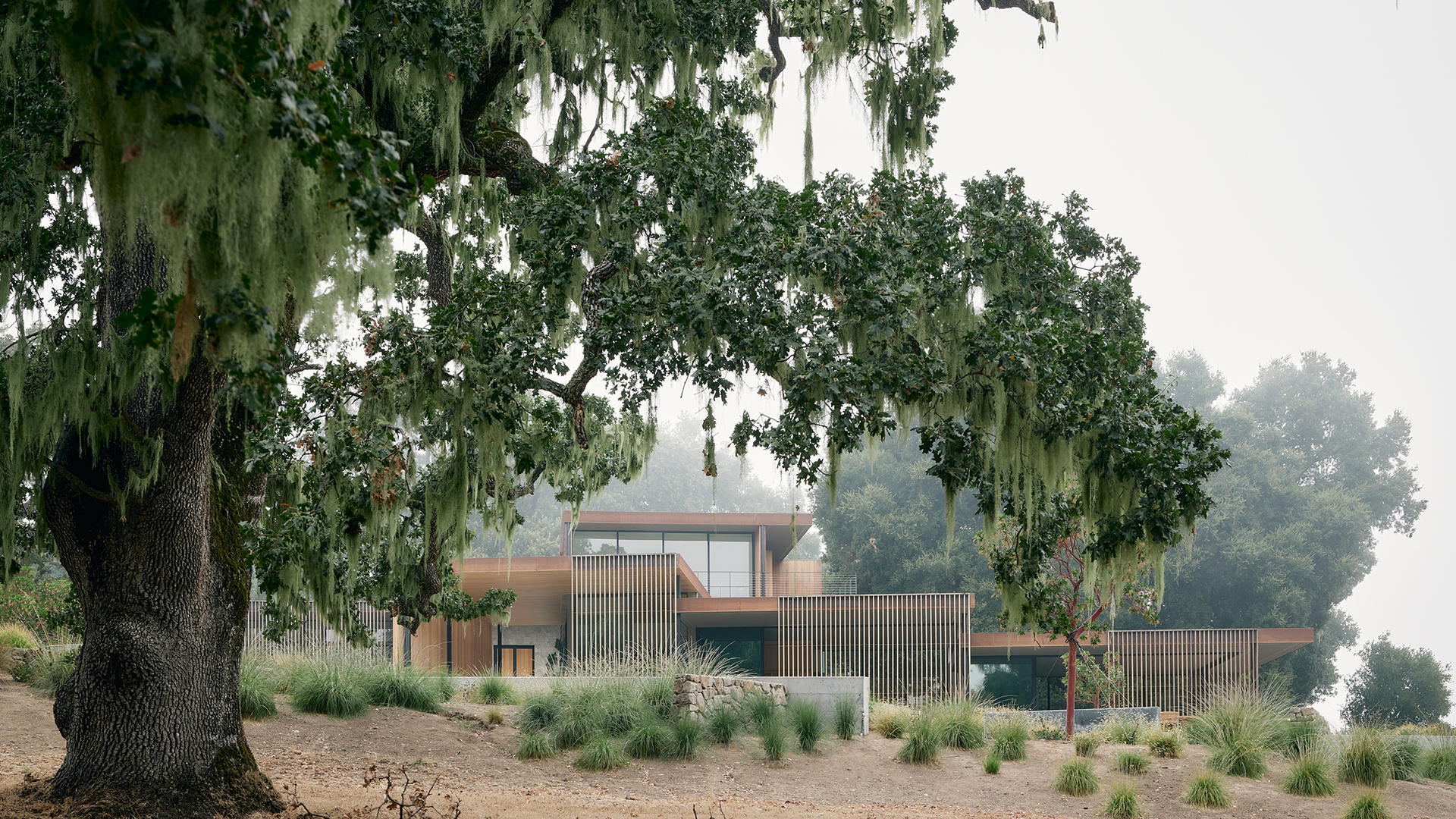The Carmel Valley site was spectacular. Architect Mark English stepped aside and let nature rule.
San Francisco architect Mark English, who founded his eponymous firm in 1992, long dreamed of designing a home in Carmel Valley’s exclusive, 20,000-acre Santa Lucia Preserve. Having grown up in the rural east foothills of nearby Santa Clara County amid hills and nature, he was primed for it. English recently got his wish with a commission from clients originally from Korea, who wanted a compound fusing California living with their own culture.

The Preserve is part of a conservation land trust that allows very little building, and understandably has very defined guidelines for what gets built. The site on the valley floor included a great meadow of native grasses and wildflowers punctuated by dramatic Coast and Valley Oak trees and that’s where the wife, with an architecture degree from the Rhode Island School of Design, wanted a modern interpretation of traditional Korean courtyard houses known as hanoks. Her husband, a healthcare entrepreneur, is involved with international business. In addition to providing a home for their two college-age sons and visiting family, they needed the compound to be a place for visiting professionals to meet and work.
Hanoks orientate buildings to the land and seasons, connecting people to nature rather than merely shielding them. This Korean concept aligns with California Modernism, which blurs the boundaries between indoor and outdoor spaces, and with English’s approach of making each project a thoughtful dialogue with the site’s topography. It also relates to his deep love of the West. “In Italy, where I attended grad school, I saw an Ansel Adams photography exhibit featuring the rolling hills of California,” he recalls. “I got homesick.”
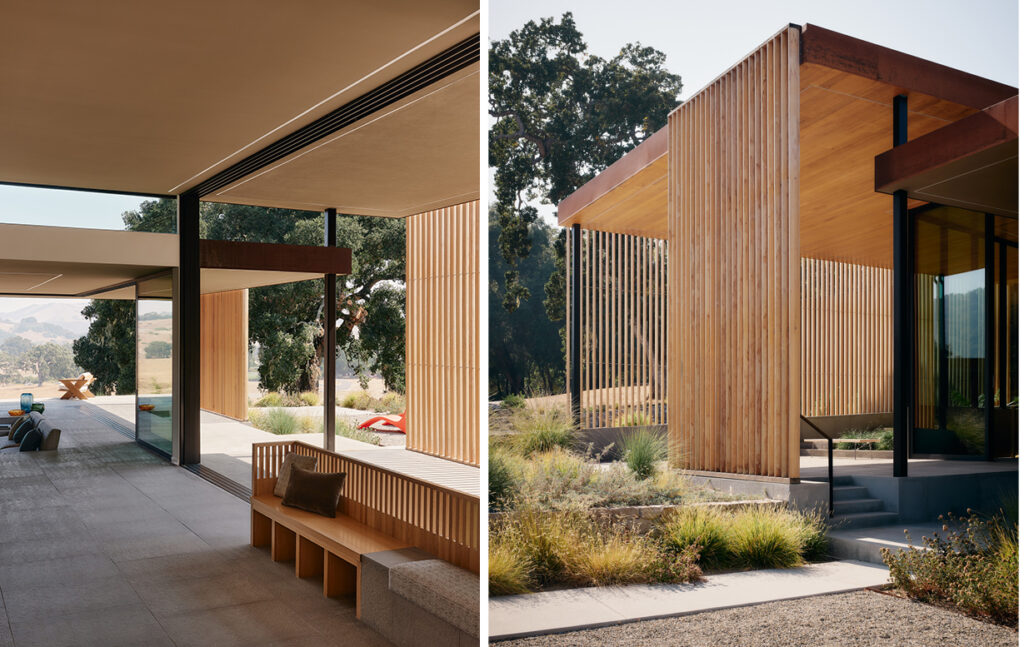
To protect the unspoiled terrain and ensure thoughtful design decisions, English enlisted Arterra Landscape Architects from the outset. The firm had worked on several estates at the Preserve and was familiar with the process, which consisted of no less than five hearings before a tough design review board. For English, the meadow became the 9,200 square-foot design’s focal point. With a physical model to convince the board, he sought to leave the meadow intact and build the house and a separate garage and guesthouse only on its edges. The important thing was “the beauty of the meadow bordered by giant oaks like big rock outcroppings,” he explained, pointing to the two-story home that now zig-zags, and follows the contours of the land wrapping around the heritage oak trees.
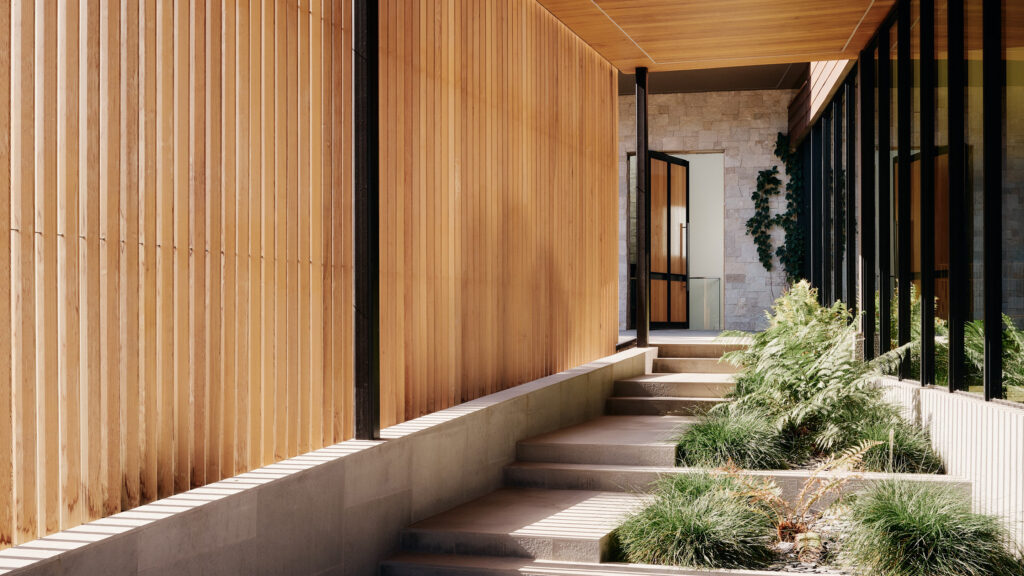
The living pavilion designated for business gatherings progresses down the slope. It features separate sections linked by screened verandas and wheelchair-accessible ramps, with Korean-inspired flat roofs for the foyer, library, and sunken living room. English selected materials to meld with the setting: Bluestone paving, white oak cabinetry, quartz counters, dark concrete, and weathered steel. A key design element is the distinctive vertical cedar wood screens that the contractor Jim Daily hand crafted in his Portola Valley Builders’ workshop. During the day, they filter sunlight streaming in through the glass walls, while providing privacy once the sun sets.
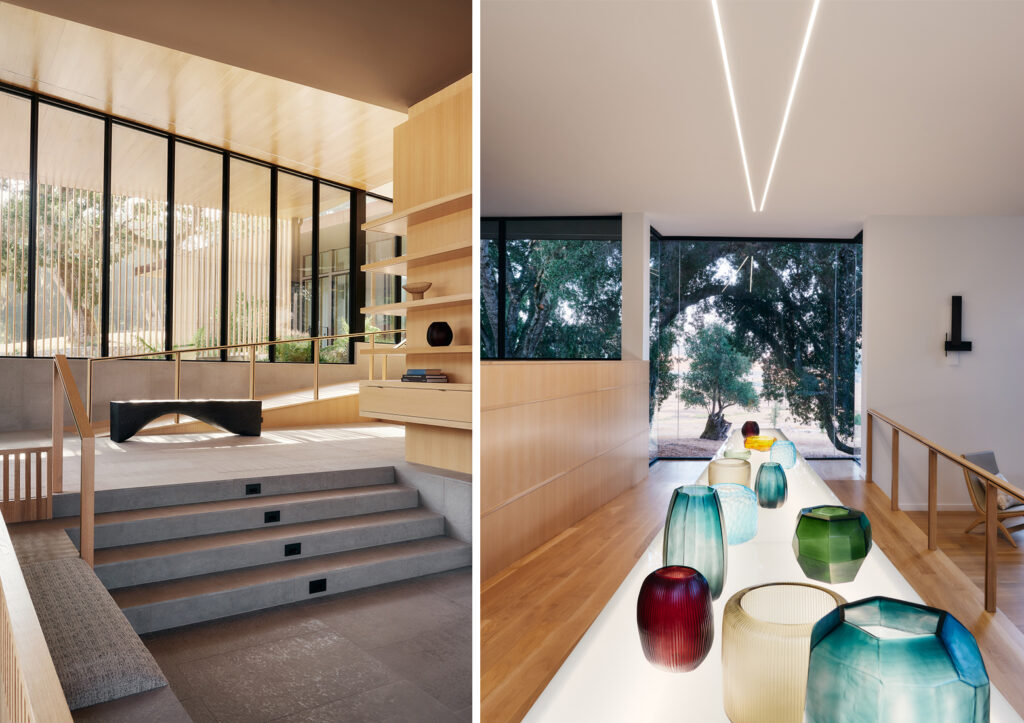
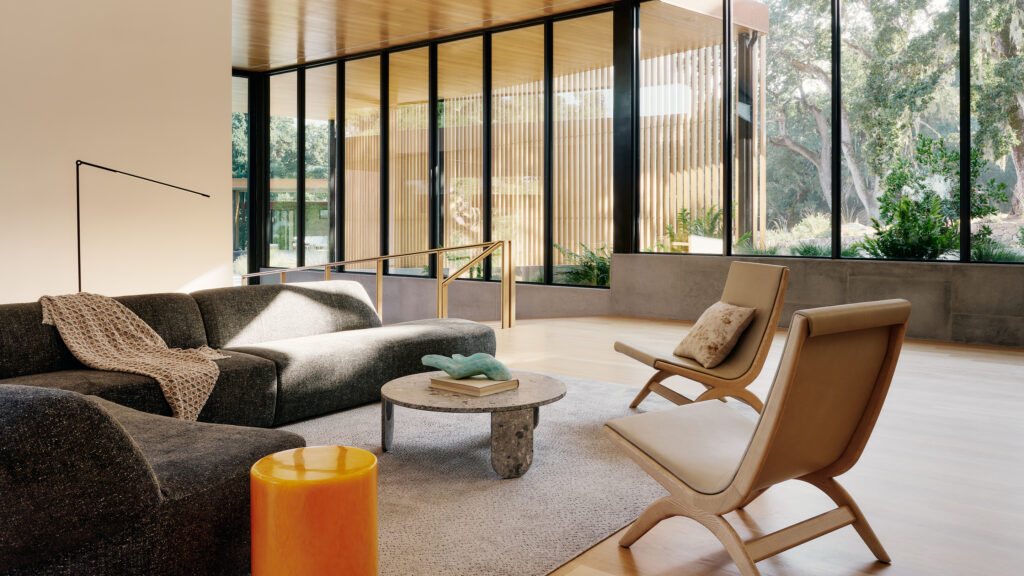
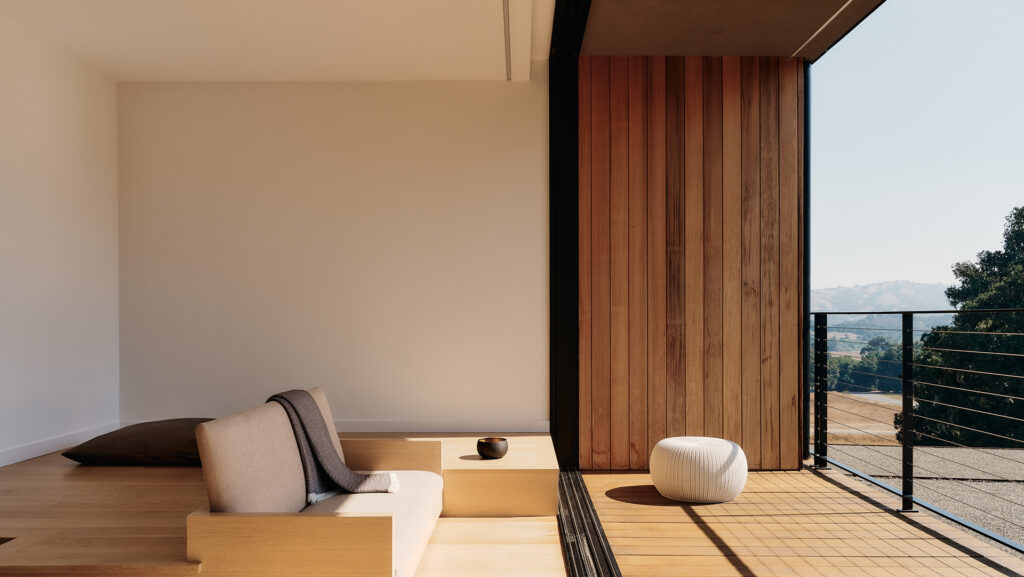
Spaces designed for business gatherings transition seamlessly into private quarters, which include a family room, dining area, and kitchen. A bedroom wing encompasses two primary bedroom suites separated by a shared dressing room. English’s perforated steel staircase that snakes around an elevator shaft, is another feature crafted locally. Upstairs are three ensuite bedrooms and a yoga studio, while a subterranean level contains the media room and wine cellar. Outside the main house, Arterra organized the exterior space into a central plaza that leads to the guest house. Red-trunked madrones complement the compound’s architecture, and native grasses and perennials echo the colors and textures of the preserved meadow.
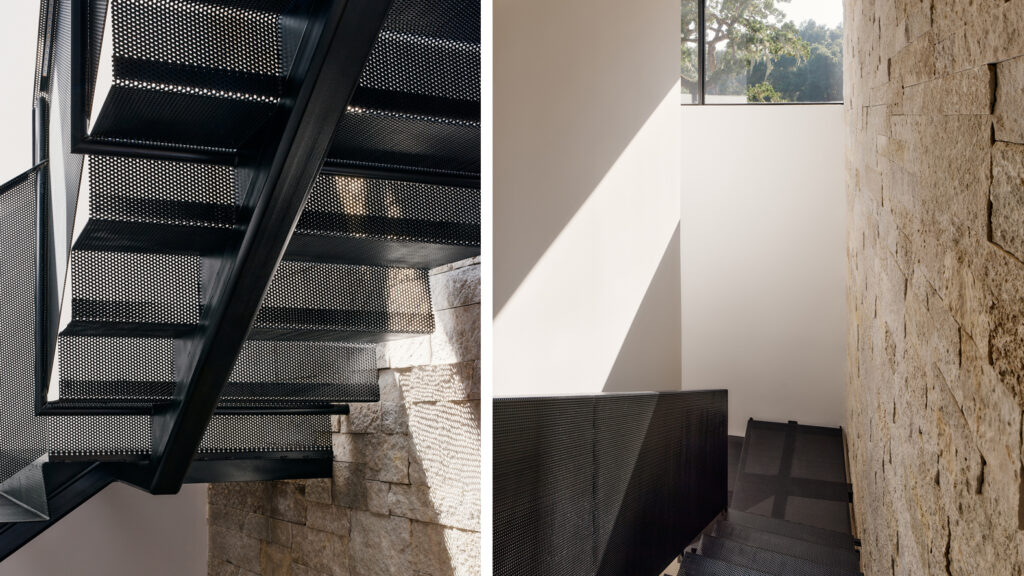
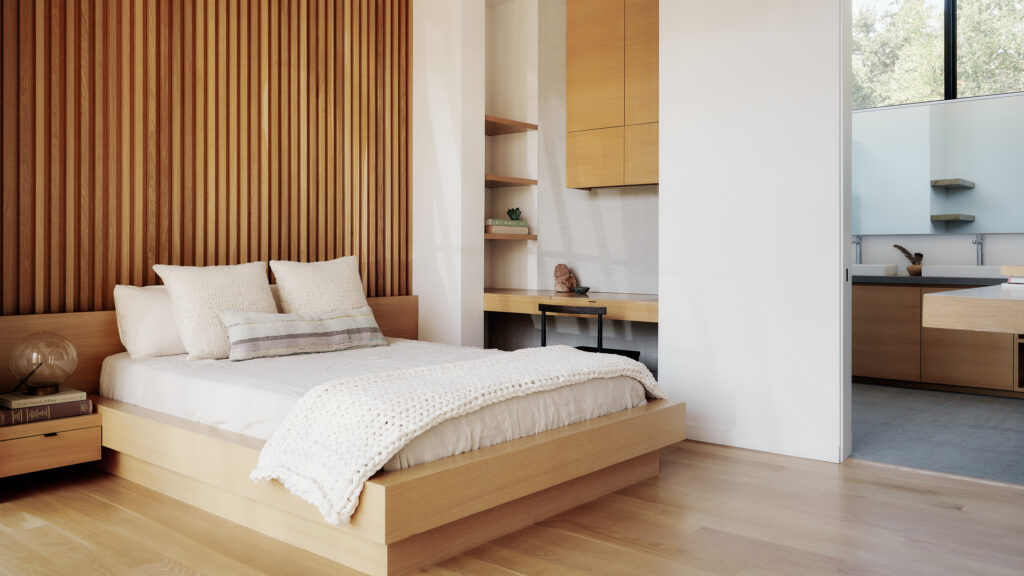
Completed in 2023, Meadow House, which garnered numerous national and international awards for its hand-crafted elegance and siting, has made English a darling of the Preserve where he already has another commission. The trick was “to flow with the landscape,” he says.

